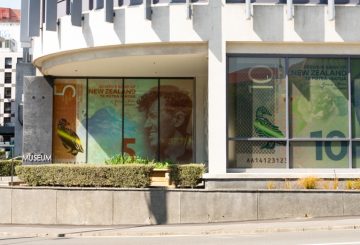Shane Marsh và James Mceniery là hai người kiwi, do Covid-19 trở về nhà New Zealand từ Singapore.
Cặp này vừa tung ra một chiếc ví kỹ thuật số mà họ tin rằng sẽ cho phép các cá nhân và doanh nghiệp như nhau thực hiện các khoản thanh toán không tiếp xúc.
Ứng dụng của họ gọi là “Dosh”, một thông tục cho tiền, thanh toán ngay lập tức cho các doanh nghiệp cho hàng hóa và dịch vụ.
Trước đây, thực hiện thanh toán yêu cầu một người phải nhập một số tài khoản ngân hàng 16 chữ số vào nền tảng ngân hàng trực tuyến của họ, sau đó sẽ có một sự chậm trễ cho các khoản tiền để xóa.
Người dùng bây giờ có thể tải xuống ứng dụng Dosh miễn phí và chuyển tiền từ tài khoản ngân hàng của họ sang ví kỹ thuật số của họ. Sau đó, tiền có thể được chuyển khi thanh toán cần được thực hiện cho người khác hoặc doanh nghiệp.
“Ứng dụng này sẽ cho phép thanh toán bằng số điện thoại di động hoặc mã QR có thể được quét tại quầy của một thương gia hoặc trên hóa đơn của họ”, Marsh nói.
Ví có thể lưu trữ lên đến $1.000.00, với giao dịch tối đa là $500.00.
Marsh cho biết họ đang nhắm mục tiêu các doanh nghiệp nhỏ, những người có thể đang đấu tranh để cung cấp thanh toán không tiếp xúc trong khóa hiện tại. Ông cũng mong đợi việc tiếp cận sẽ mạnh mẽ giữa các nhóm xã hội của bạn bè hoặc bạn bè.
“Tôi thấy rất nhiều người đang ghi chú trên cửa sổ cửa hàng của họ với chi tiết tài khoản ngân hàng của họ và yêu cầu mọi người gửi cho họ hình ảnh của các giao dịch nhưng với Dosh bạn có thể sử dụng mã QR doanh nghiệp của bạn và có mã đó trên trang web của công ty hoặc hóa đơn hoặc quầy và mọi người chỉ có thể quét và trả tiền”, Marsh nói .
“Nơi mà Dosh thực sự có thể lấp đầy một khoảng trống trên thị trường thực sự là với những doanh nghiệp nhỏ độc lập và không có các tùy chọn thanh toán phức tạp độc lập ngày hôm nay. Đó sẽ là trọng tâm của chúng tôi.”
Họ có kế hoạch để bắt đầu dịch vụ chỉ với các khoản thanh toán sau đó mở rộng nó theo thời gian, thêm các dịch vụ cho đầu tư vi mô, dịch vụ bảo hiểm và mua bây giờ trả sau.
“Mục tiêu của chúng tôi là trở thành một nhà cung cấp dịch vụ tài chính hàng đầu tại New Zealand vì vậy việc cung cấp sẽ mở rộng hơn nhiều so với các khoản thanh toán.”






























































